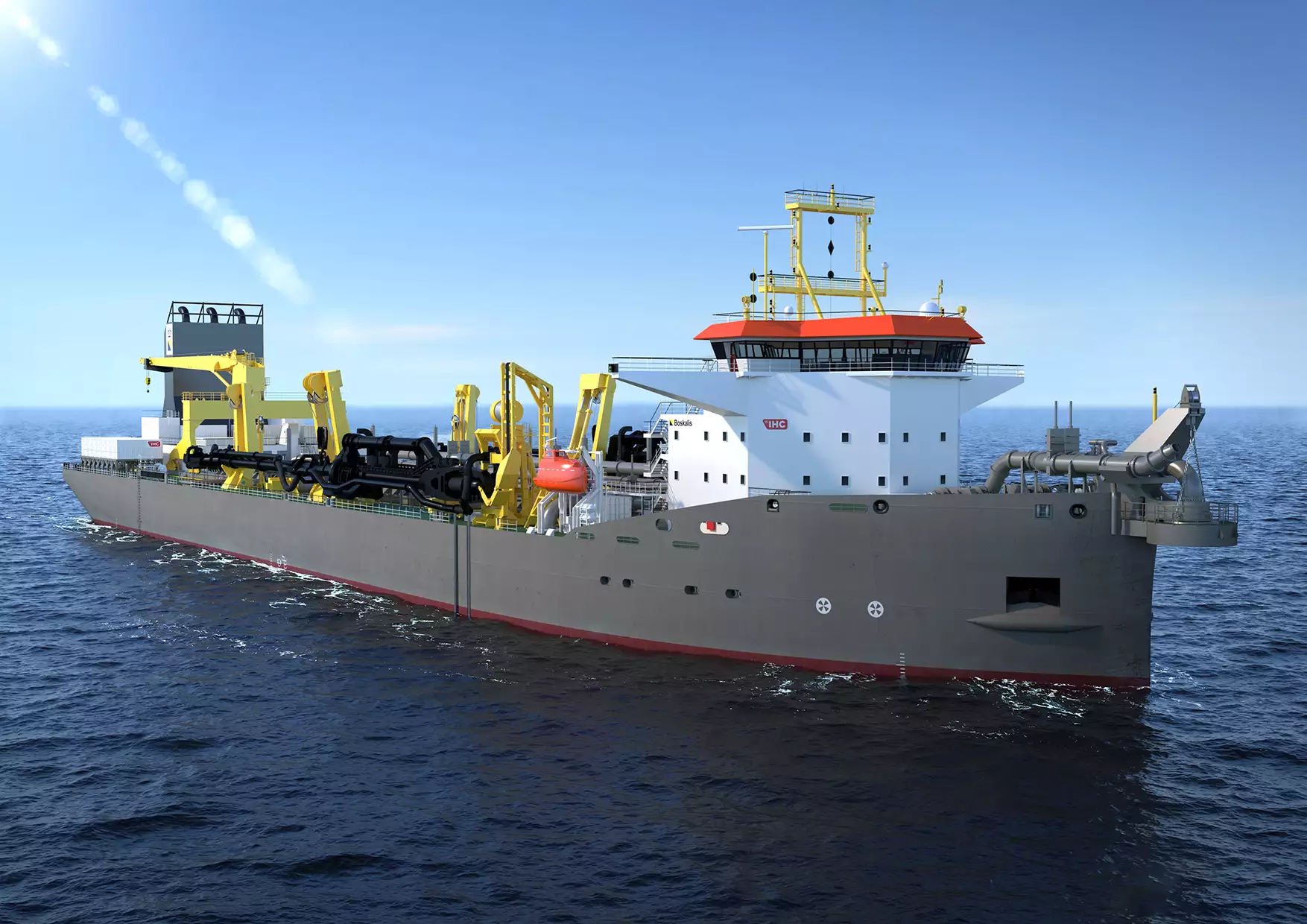Introduction
Boskalis has finalized an agreement with Royal IHC, a renowned Dutch shipbuilding company, to construct a cutting-edge trailing suction hopper dredger of significant proportions. The contract comes after an extensive design phase, with the vessel boasting an impressive hopper capacity of 31,000 m3. Construction will take place at the IHC yard in Krimpen aan den IJssel, the Netherlands, over the coming years.
This new addition to Boskalis’ fleet will rank among its largest trailing suction hopper dredgers. Key highlights of its design include full diesel-electric installation and propulsion utilizing Azipods™. These technological advancements, along with an optimized underwater hull design and sophisticated automation system, promise substantial reductions in fuel consumption.
Moreover, the vessel is being primed for the potential use of (green) methanol as an alternative fuel source. Onboard methanol plant and storage facilities facilitate this transition. Additionally, the dual fuel main engines, equipped with two-stage turbos, can operate on traditional fuels or more sustainable options like biodiesel and methanol, resulting in significant CO2 emission reductions.
Featuring a double suction pipe with underwater pumps and two discharge pumps boasting a combined capacity of 15,000 kW, the new trailing suction hopper dredger is well-equipped for efficient dredging and material discharge over considerable distances to reclamation sites. This robust performance enhances overall dredging efficiency.
Expected to commence service by mid-2026, this vessel represents a notable stride in Boskalis’ efforts to enhance the sustainability of its dredging fleet, thanks to its advanced design and state-of-the-art technology.
Trailing Suction Hopper Dredger Operations
A trailing suction hopper dredger functions by extracting and transporting sand or sediment through a trailing head connected to a lengthy suction pipe equipped with water jets while traversing the seabed. This process loosens the dredging material ahead of the suction head. Large centrifugal pumps then transfer the dredged material to the hopper, from which it can be later deposited through bottom doors or discharged via a pipeline or spray mechanism to a reclamation area. Applications of hopper dredgers include deepening and maintaining ports and waterways, as well as safeguarding coastlines from erosion and the impacts of climate change.
